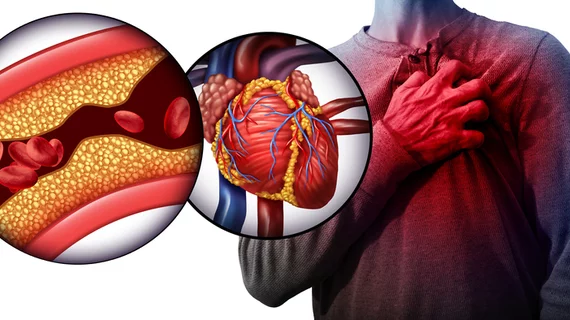Avoiding hospitals due to COVID-19 put heart attack, stroke patients on Medicare at risk
Medicare patients tended to avoid hospitals in the early days of COVID-19, even for serious cardiovascular events such as acute myocardial infarctions (AMIs) and strokes. A new analysis in JAMA Cardiology looked at some key details behind this trend.
Using the Medicare beneficiary summary file, the study's authors compared the weekly rates of hospital use for MI and stroke in 2020 with weekly rates from 2018 and 2019. Overall, in 2018 and 2019, Medicare recipients averaged 43 weekly hospitalizations, outpatient ER or observational visits for MI and stroke per 100,000 beneficiaries.
In 2020, hospital use for AMI and stroke was 14% lower in 2020 compared with 2018 and 2019. A particularly large drop in hospital use, 32%, was seen between March 11 and April 7, 2020.
Between weeks 15 and 25, hospital use for AMI and stroke started to trend upward. However, 2020 weekly rates remained 12% lower on average than previous years between weeks 26 and 52.
Researchers also observed that a sharp decline and partial recovery was about the same across the subgroups.
Patients who had six or more chronic conditions saw the biggest decline in hospital use for MI and stroke. This was true both in absolute terms (a decrease of 30 events per 100,000 beneficiaries per week) and relative terms (a 42% decrease). The authors also found that this subgroup began with the highest rate of hospital use for MI and stroke in 2018 and 2019 (71 per 100,000 beneficiaries).
Were these declines all due to fear and anxiety tied to COVID-19? Those things likely played a central role, but the team behind the analysis also noted that the rise in mortality associated with COVID-19 could have "lowered the population-level average risk of AMI or stroke" among Medicare patients.
Learning more about these reasons appears to be a huge priority of researchers going forward.
“Understanding the extent to which each of these factors contributed to reductions in hospital use for AMI and stroke will be important for future medical and public health advancements in care for patients with AMI and stroke,” wrote first author Kate A. Stewart, PhD, with SM Mathematica in Chicago, and colleagues.
See the entire research letter here.
